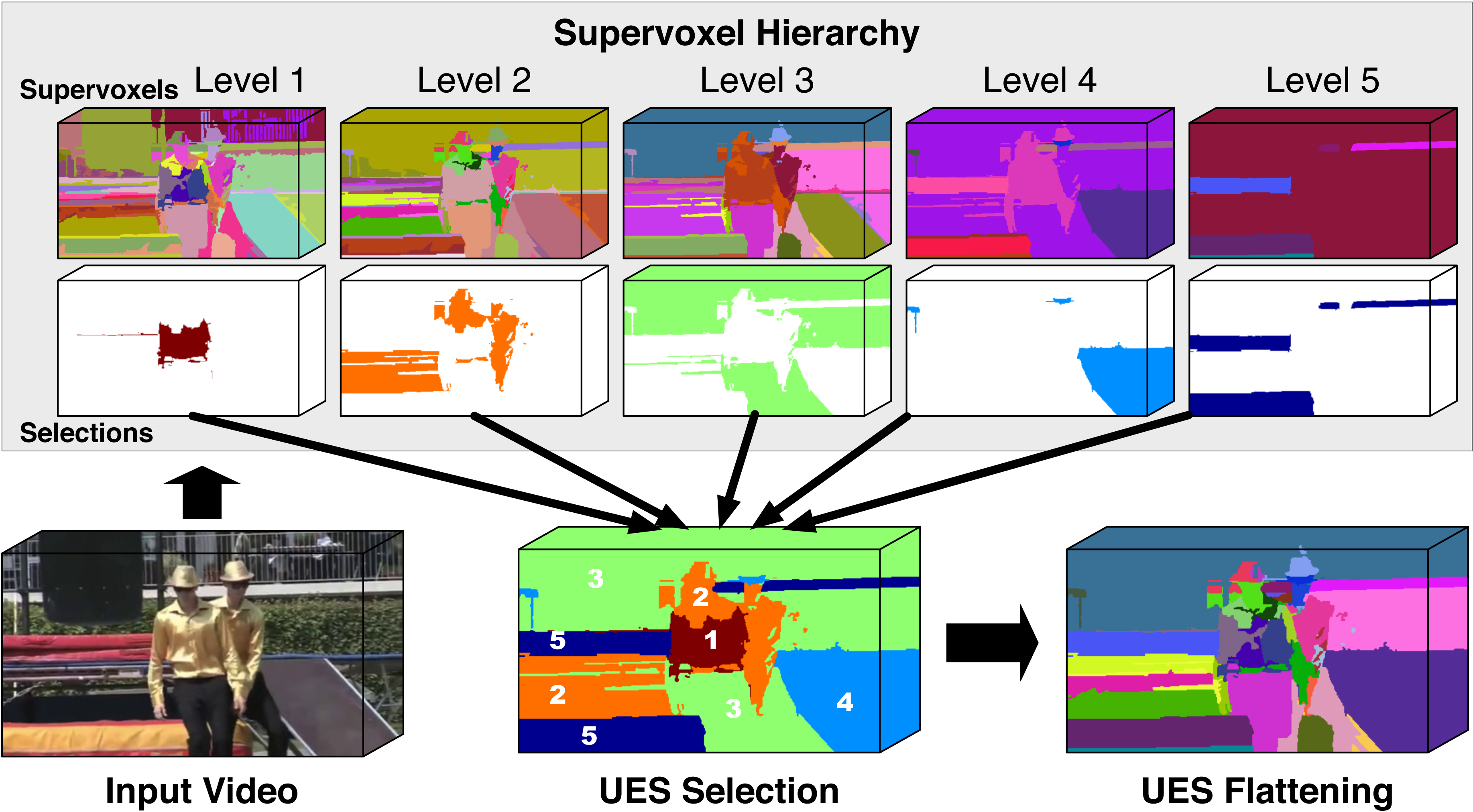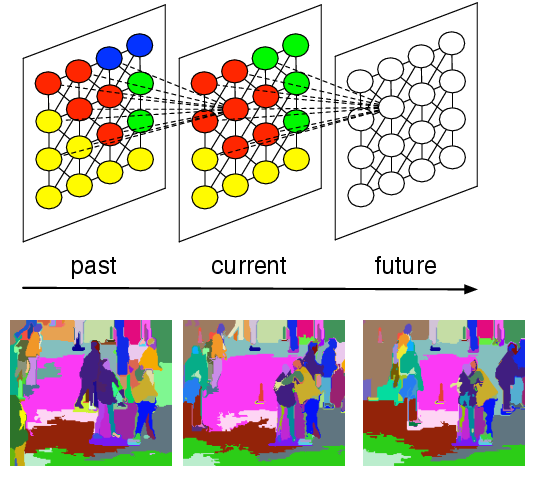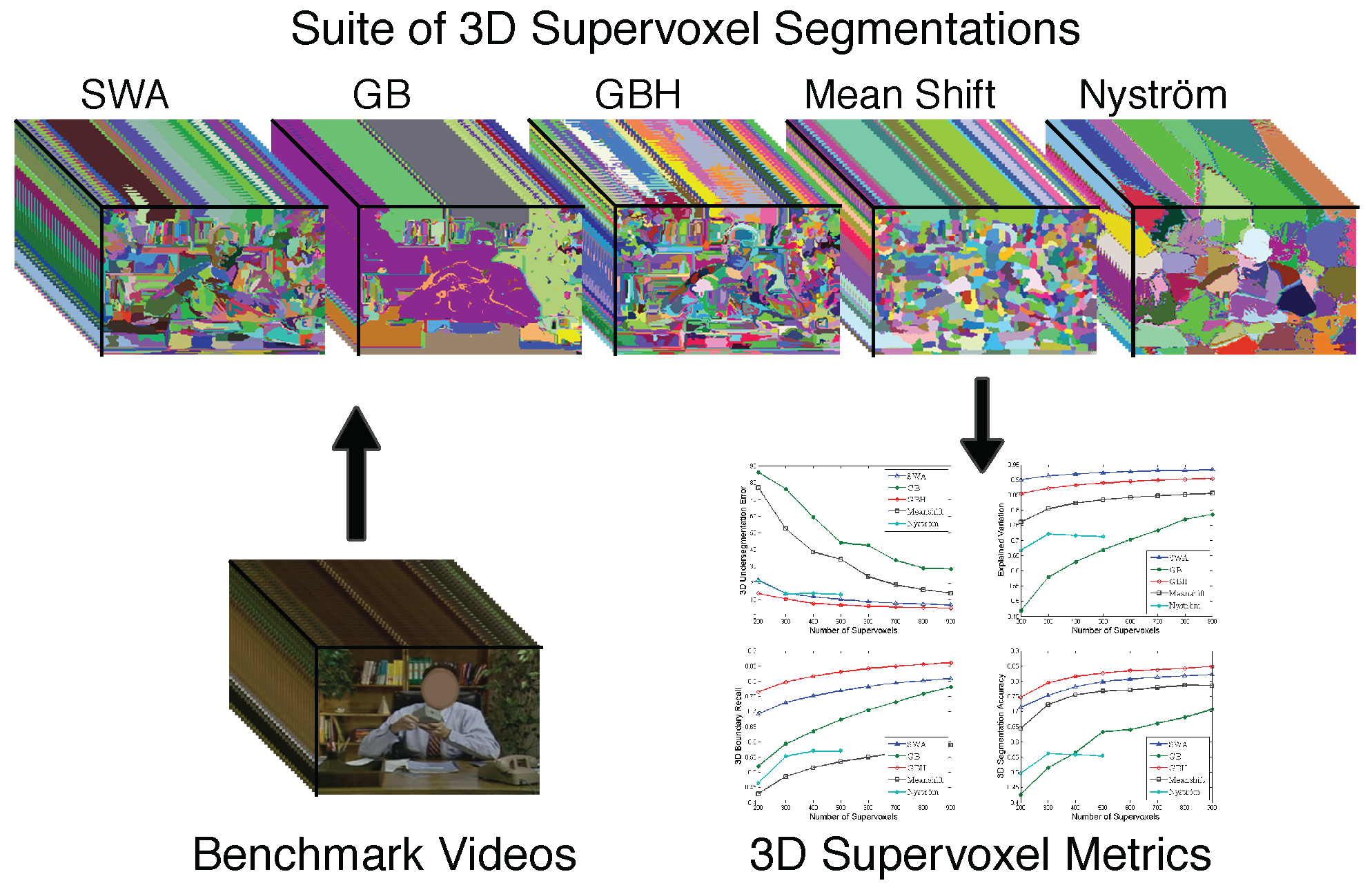|
Jason J. Corso
|
Snippet Topic: Video Segmentation
Supervoxel Hierarchy Flattening  | Supervoxel hierarchies provide a rich multiscale decomposition of a given video suitable for subsequent processing in video analysis. The hierarchies are typically computed by an unsupervised process that is susceptible to under-segmentation at coarse levels and over-segmentation at fine levels, which make it a challenge to adopt the hierarchies for later use. In this paper, we propose the first method to overcome this limitation and flatten the hierarchy into a single segmentation. Our method, called the uniform entropy slice, seeks a selection of supervoxels that balances the relative level of information in the selected supervoxels based on some post hoc feature criterion such as object-ness. For example, with this criterion, in regions nearby objects, our method prefers finer supervoxels to capture the local details, but in regions away from any objects we prefer coarser supervoxels. We formulate the uniform entropy slice as a binary quadratic program and implement four different feature criteria, both unsupervised and supervised, to drive the flattening. Although we apply it only to supervoxel hierarchies in this paper, our method is generally applicable to segmentation tree hierarchies. Our experiments demonstrate both strong qualitative performance and superior quantitative performance to state of the art baselines on benchmark internet videos.
|
|
C. Xu, S. Whitt, and J. J. Corso.
Flattening supervoxel hierarchies by the uniform entropy slice.
In Proceedings of the IEEE International Conference on Computer
Vision, 2013.
[ bib |
poster |
project |
video |
.pdf ]
|
|
|
Streaming Hierarchical Video Segmentation  | The use of video segmentation as an early processing step in video analysis lags behind the use of image segmentation for image analysis, despite many available video segmentation methods. A major reason for this lag is simply that videos are an order of magnitude bigger than images; yet most methods require all voxels in the video to be loaded into memory, which is clearly prohibitive for even medium length videos. We address this limitation by proposing an approximation framework for streaming hierarchical video segmentation motivated by data stream algorithms: each video frame is processed only once and does not change the segmentation of previous frames. We implement the graph-based hierarchical segmentation method within our streaming framework; our method is the first streaming hierarchical video segmentation method proposed.
|
|
C. Xu, C. Xiong, and J. J. Corso.
Streaming hierarchical video segmentation.
In Proceedings of European Conference on Computer Vision, 2012.
[ bib |
code |
project |
.pdf ]
|
StreamGBH is included as part of LIBSVX |
|
Evaluation of Supervoxels for Early Video Processing  | Supervoxel segmentation has strong potential to be incorporated into early video analysis as superpixel segmentation has in image analysis. However, there are many plausible supervoxel methods and little understanding as to when and where each is most appropriate. Indeed, we are not aware of a single comparative study on supervoxel segmentation. To that end, we study five supervoxel algorithms in the context of what we consider to be a good supervoxel: namely, spatiotemporal uniformity, object/region boundary detection, region compression and parsimony. For the evaluation we propose a comprehensive suite of 3D volumetric quality metrics to measure these desirable supervoxel characteristics. Our findings have led us to conclusive evidence that the hierarchical graph-based and segmentation by weighted aggregation methods perform best and almost equally-well.
|
|
C. Xu and J. J. Corso.
Evaluation of super-voxel methods for early video processing.
In Proceedings of IEEE Conference on Computer Vision and
Pattern Recognition, 2012.
[ bib |
code |
project |
.pdf ]
|
All supervoxel methods are included as part of LIBSVX |
|
|



